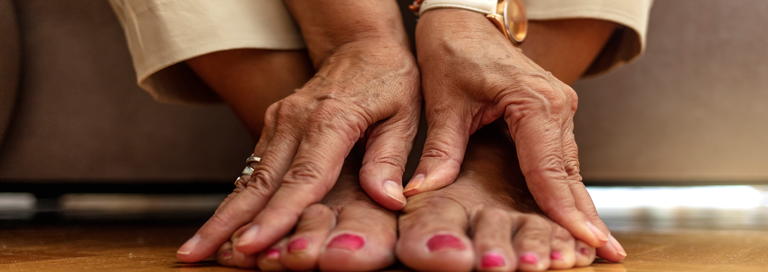If you have diabetes, you know it’s common to suffer from reduced blood flow to your legs and feet.
It’s a condition called peripheral artery disease, affecting 1 out of every 3 people with diabetes. With PAD, plaque builds up on your blood vessel walls, restricting blood flow and oxygen.
Symptoms include pain, numbness, weakness, sores that won’t heal, and, in some cases, a condition called critical limb ischemia that leads to gangrene and eventually amputation.
My patients tell me that one of the scariest complications of diabetes is the idea of losing a limb…
But a recent study out of Mount Sinai Medical Center found that chelation therapy was so successful at treating a small group of patients, that the lead researcher said it was “unethical” to have to conduct more extensive trials to get FDA approval.1
Study participants had a mean age of 75. About 70% were diagnosed with coronary artery disease, and 50% had leg, foot, or toe amputations.
After chelation therapy, all the patients reported complete wound healing. And the quality of life, including pain, physical, and social limitations, improved dramatically and remained high throughout the year-long follow-up.
At the Sears Institute, we’ve been treating diabetes patients with chelation therapy for years – with incredible results.
You see, today’s toxic world – full of endocrine-disrupting heavy metals – causes serious harm to the beta cells in your pancreas.2,3 And when these insulin-producing cells get damaged, they can no longer produce enough insulin to regulate your blood glucose levels.
The end result is type 2 diabetes.
But chelation therapy removes these heavy metals – reducing the risk of diabetes and amputations.
The word “chelate” comes from the Greek word that means “claw.” And that’s what chelation does. In about an hour, toxins are “clawed” painlessly out of
your body.At my clinic, I use calcium disodium EDTA for IV chelation. The EDTA is injected into your bloodstream using an IV. It grabs hold of toxins while they’re in your bloodstream and carries them out through your kidneys.
Over the years, I’ve also found that patients get the best results when we combine IV and oral chelation.
You can do oral chelation at home using prescription DMSA. This compound is highly effective at eliminating mercury from your body. It can even remove heavy metals that have been deposited in the brain.
It should be taken in on-again/off-again cycles — ideally, three days on and 11 days off.
3 ways to detox easily at home
Some herbs and supplements can help you detox naturally at home. A few I recommend to my patients are:
-
- Milk Thistle (Silybum marianum). This medicinal plant is one of the best herbs for clearing toxins from your blood. Traditional healers have used milk thistle for more than 2,000 years — but most modern doctors know nothing about it. It has a potent antioxidant called silymarin that helps detoxify the liver and restore healthy liver function. Milk thistle can be found at your local health food store in many forms. I recommend the capsules. Take 200 mg of an extract standardized to 80% silymarin two or three times per day.
- Modified Citrus Pectin. This is made from the inner peel of citrus fruit. It’s one of the most powerful detoxifying substances I’ve ever found. USDA researchers gave modified citrus pectin to people for six days and measured the amount of toxins excreted in their urine before taking it and 24 hours after. They found it increased the amount of mercury excreted in urine by 150%.4
- N-Acetylcysteine (NAC). A recent double-blind, placebo-controlled study found that supplementing with NAC can remove mercury, lead, cadmium, aluminum, and arsenic. Additional studies show that NAC may stabilize blood sugar by improving insulin resistance.5 I advise supplementing with 500 mg per day.
To Your Good Health,

Al Sears, MD, CNS
References:
1. Arenas I, et al. “Limb preservation using edetate disodium-based chelation in patients with diabetes and critical limb ischemia: an open-label pilot study.” Cureus. 2019 December: 11(12): e6477. doi:10.7759
2. Fabricio G, et al. Environmental contaminants and pancreatic beta cells.” J Clin Res Pediatr Endocrinol. 2016 Sep; 8(3): 257–263.
3. Lind PM, Lind L. “Endocrine-disrupting chemicals and risk of diabetes: an evidence-based review.” Diabetologia. 2018 Jul;61(7):1495-1502.
4. Eliaz I, et al. The effect of modified citrus pectin on urinary excretion of toxic elements. Phytother Res. 2006 Oct;20(10):859-64.
5. Rossignol D. “The use of N-acetylcysteine as a chelator for metal toxicity.” The Therapeutic Use of N-Acetylcysteine (NAC) in Medicine.” 2019;169-179.

